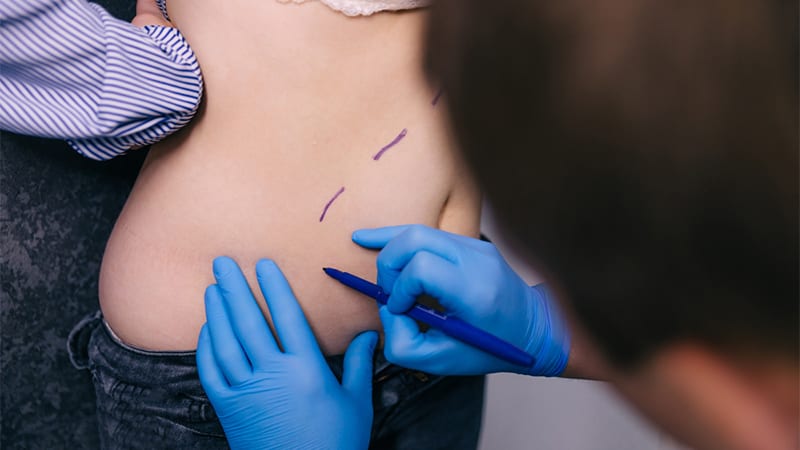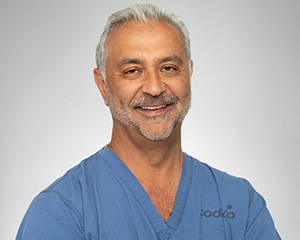Liposuction—also known as lipo—is a fat-removal operation conducted by plastic surgeons to remove fat in the body. This procedure differs from other fat-removal procedures as it requires surgery and others do not. Before you decide if liposuction is right for you (and to find out if fat comes back after lipo), keep reading to learn more about what is liposuction.
Page Topics
What is Liposuction?
Liposuction is a surgical procedure conducted by plastic surgeons. This operation works to remove fat on the body and is done while the patient is under anesthesia. Typically, a lipo procedure is used on patients who are at a healthy body weight who are looking to remove fat on specific areas of their body such as the abdomen, waist, and thighs.
It’s important to note that it is not a weight-loss procedure, instead, its goal is to alter the body’s image by removing fat cells in specific areas of the body. The areas of the body that lipo is usually performed on have fat that has not been able to be removed through a healthy diet or regular exercise.
How long does a typical liposuction operation last and what factors can affect the duration of the procedure?
As mentioned above, this is a surgical procedure that requires patients to go under-the-knife and also involves anesthesia. A typical lipo operation can last anywhere from 1 hour to 4 hours depending on the patient’s areas of removal and number of areas for removal.
Types of Liposuction
There are 5 different types of procedures that can be performed by plastic surgeons:
1. Tumescent: This type of procedure uses a saline solution to suction the fat out of the body through small tubes. Tumescent liposuction is the most common type of liposuction procedure.
2. Dry: This is similar to tumescent lipo, however, no liquids are used to suction the fat out of the body. Therefore, this type of liposuction procedure can cause bruising or bleeding.
3. Ultrasound-Assisted: An ultrasound-assisted procedure—also known as UAL—utilizes an ultrasound machine to “melt” the fat away on the body. UAL is used on areas of the body that have denser areas of fat, as the ultrasound works to break up the fat in the body. After using an ultrasound machine, suction liposuction is conducted to remove the broken up fat from the ultrasound-assisted liposuction.
4. Power-Assisted: This form of liposuction—also known as PAS—uses a machine that moves back and forth, quickly, to make pulling out the fat easier for the plastic surgeon.
5. Laser-Assisted: A laser-assisted liposuction procedure—also known as LAL—also uses a saline solution (similar to tumescent liposuction). Unlike the above liposuction procedures, laser-assisted liposuction is less invasive and uses small tubes inserted into the body that heats and “melts” the fat. After using a laser, a plastic surgeon will then train excess fluid from the body.
Is It Permanent?
Whether or not a liposuction procedure provides permanent results is typically up to the patient. When done in conjunction with a healthy lifestyle, including a healthy diet and regular exercise, liposuction patients can expect to have permanent fat-removal results. However, those patients who experience weight gain after lipo or continue on an unhealthy lifestyle can cause any remaining fat cells to grow larger creating unproportioned fat distribution in the body.
How to Treat Stretch Marks After Pregnancy?
Can Fat Return After Liposuction?
As mentioned above, fat does have the potential to return after lipo if the patient does not take care of their body or live a healthy lifestyle. There are a few ways that fat returns after liposuction:
- The fat can come back in different places than it was “sucked” from during the procedure
- If the post-op patient gains back weight more than the number that they were after their liposuction operation
- If fat does return, it can look disproportionate in the body
How to Keep Fat from Returning After Liposuction: Tips & Tricks
Even though fat can return in the body after liposuction, there are a few ways to prevent the fat from coming back to your body. One of the most commonly asked questions is if you can gain the weight back after liposuction. While you can, there are 3 ways to keep fat from returning to your body after this procedure:
1. Maintain a weekly exercise routine: Some great examples of a healthy exercise regime include cardio exercise (including walking, running, or biking) and resistance training (using weights, weight machines, or resistance bands).
2. Eat a healthy diet: Focusing on eating a healthy diet that does not include processed junk foods and also includes a caloric deficit will help ensure that weight isn’t gained.
3. Follow the rules provided by your surgeon: After your procedure, your plastic surgeon will provide you with information on how to maintain your liposuction-induced weight loss. Following the doctor’s tips will help ensure you have the best results possible.
Are you interested in learning more about liposuction and seeing if it’s right for you? Schedule a personalized consultation with Dr. Mazahari today!
Comments are closed.


